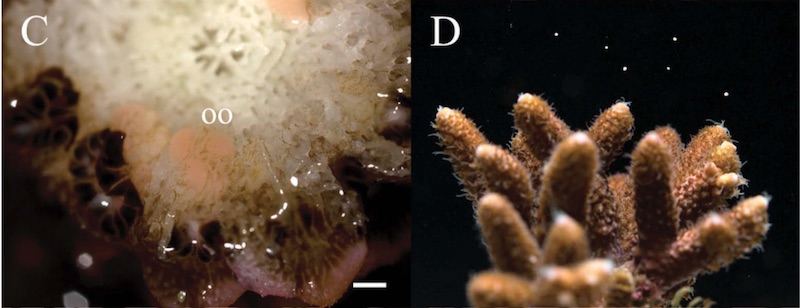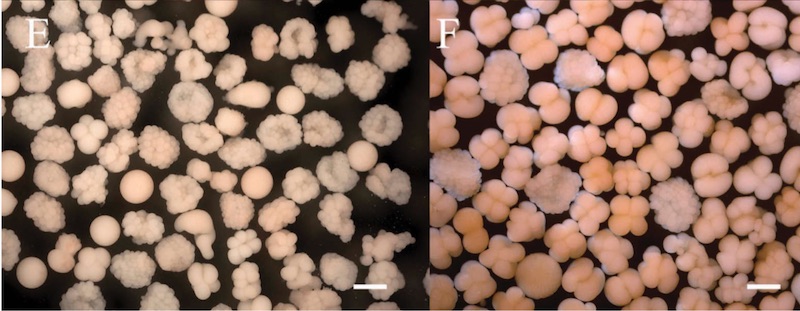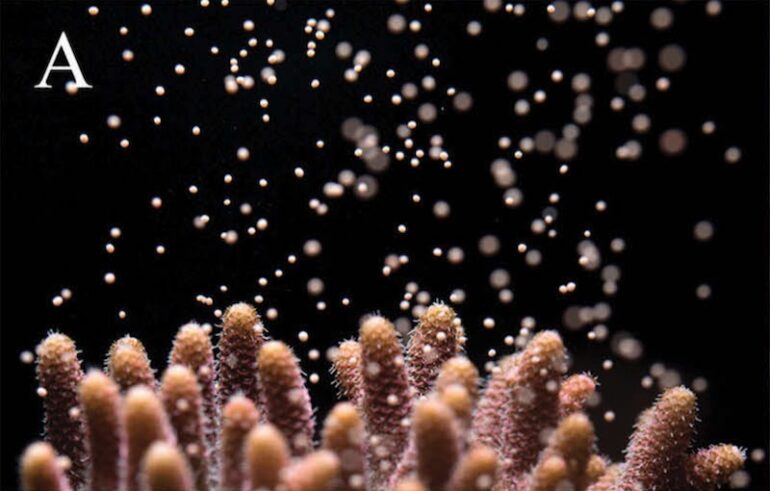it was around six years ago that Jamie Craggs and the Horniman Museum & Gardens first successfully spawned and raised Acropora corals in an aquarium environment. Now this same team has succeeded in spawning the first generation of corals they raised in aquariums and in effect, ‘closing’ the life cycle of this important group of corals, both in the wild and in the aquarium hobby.
The focus of this successive spawning study producing the world’s first F2 generation of aquarium corals was none other than the illustrious Acropora millepora, a widespread, fast growing and very colorful coral. Some might say that creating a spawning ‘mesocosm’ to recreate natural variations of seasonal temperature, solar irradiation, photoperiod and lunar cycle is the hardest part of spawning corals, but in fact it’s keeping everything stable and alive for a long period of time.
 In the first successful spawning event, 38 colonies of the first F1 generation of Acropora millepora were raised into ‘colonies’. Over the ensuing three years, 32 colonies died along the way leaving six colonies to grow to maturity and participate in the second generation captive coral spawning event.
In the first successful spawning event, 38 colonies of the first F1 generation of Acropora millepora were raised into ‘colonies’. Over the ensuing three years, 32 colonies died along the way leaving six colonies to grow to maturity and participate in the second generation captive coral spawning event.
Surprisingly it only took three years for the captive bred corals to reach maturity and a four inch diameter of the colonies seemed to be the size threshold required to spawn, as several of the sub-10cm colonies did were not egg-producing. This is much smaller than what was previously believed to be necessary for Acropora corals to be sexually mature, and well within the range of ‘aquarium size’ corals.
 It’s also notable that the aquarium mesocosms were created and supported using familiar aquarium equipment such as Radion LED lights by Ecotech Marine. Together with the Horniman coral spawning team Ecotech has been refining some features of their light fixtures specifically for the purpose of promoting coral spawning, and it’s quite incredible that our beloved Radion LED lights are used in coral spawning research and science.
It’s also notable that the aquarium mesocosms were created and supported using familiar aquarium equipment such as Radion LED lights by Ecotech Marine. Together with the Horniman coral spawning team Ecotech has been refining some features of their light fixtures specifically for the purpose of promoting coral spawning, and it’s quite incredible that our beloved Radion LED lights are used in coral spawning research and science.
It’s really quite impressive what has been accomplished with spawning Acropora stony corals in captivity simply by simulating the big four variables that coral reefs experience in nature, and to retain the same spawning cycle in captivity as they exhibited in the wild, down to the very same night of spawning! Big congratulations to Jamie Craggs and his team and collaborators who’ve made this milestone possible, we can’t wait to see what doors this opens for the broader reef aquarium hobby and community. [Invertebrate Rep. & Dev.]



